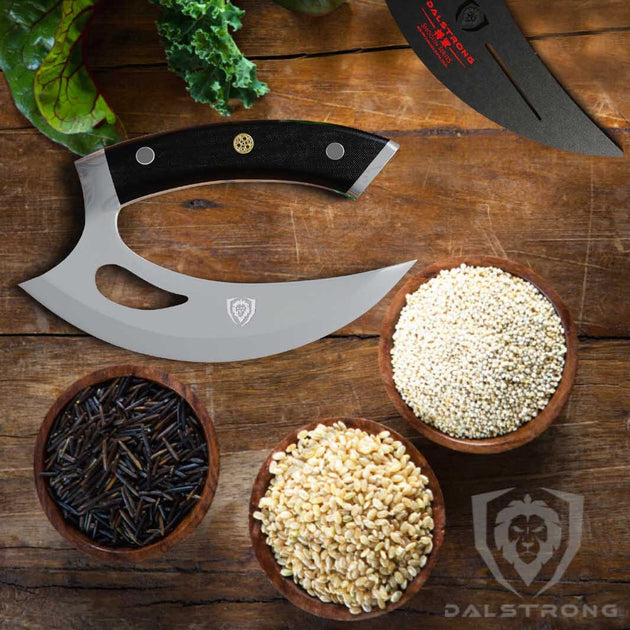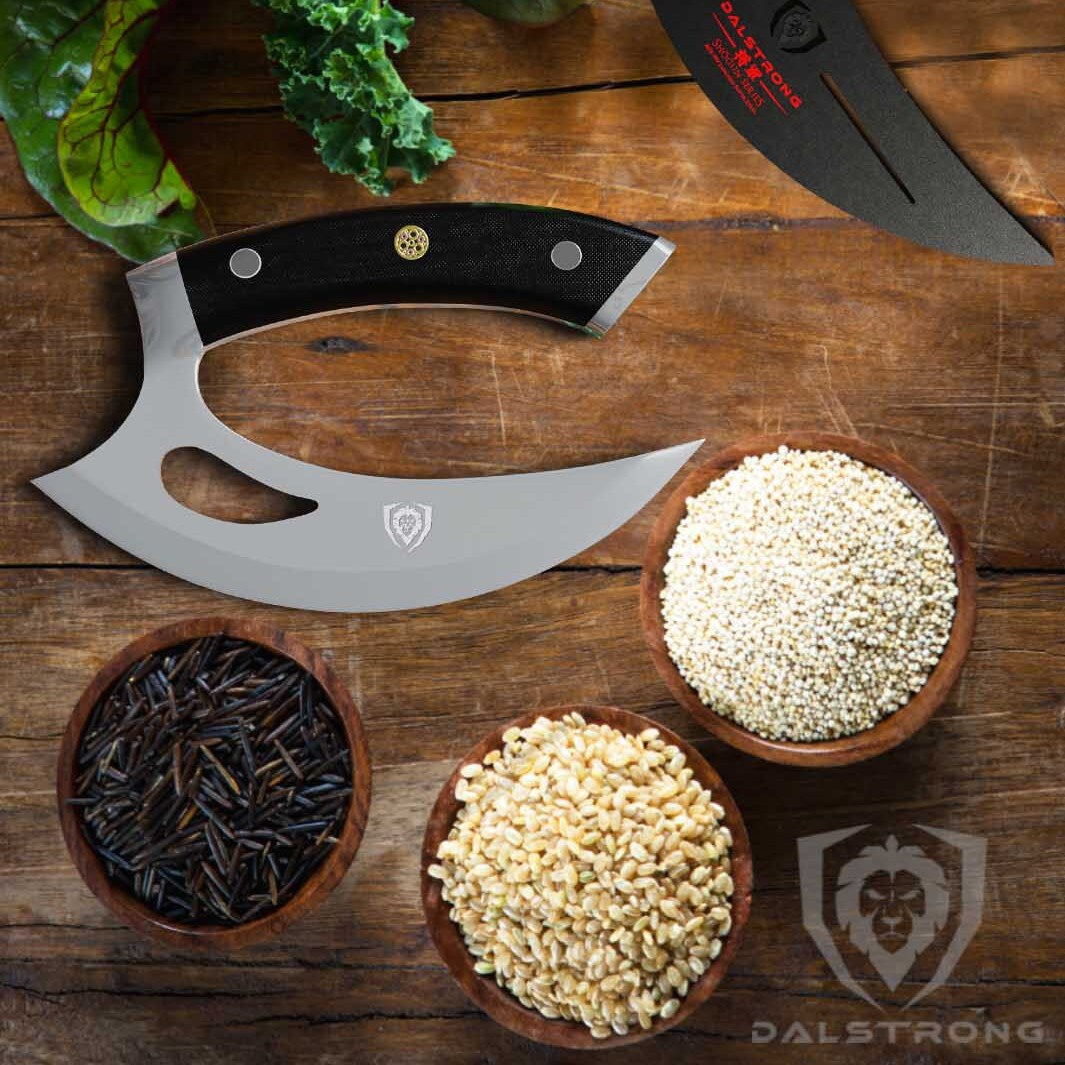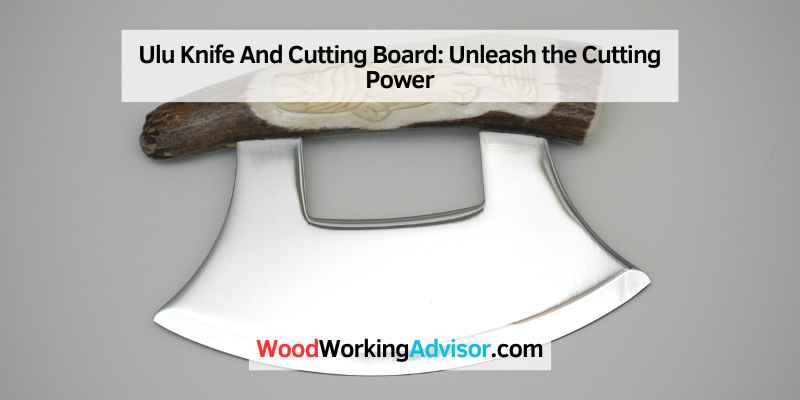An Ulu knife and cutting board are essential tools for versatile culinary tasks. The Ulu knife’s curved blade and sturdy cutting board offer efficient chopping and slicing for various ingredients, making meal preparation a breeze.
Whether you are slicing vegetables, herbs, or proteins, the Ulu knife and cutting board combination will enhance your cooking experience. The traditional design of the Ulu knife makes it a unique and functional addition to any kitchen. With its versatile uses and ergonomic design, the Ulu knife and cutting board set is a must-have for any home cook or professional chef looking to elevate their culinary skills and efficiency.
The History Of The Ulu Knife
The history of the Ulu knife dates back centuries, originating from the Indigenous peoples of Alaska. It was traditionally used for skinning animals and chopping food. Today, it is often paired with a cutting board, making it a popular tool in many modern kitchens.
The Ulu knife holds a fascinating history that dates back centuries. This iconic knife, originating from the Arctic region, showcases a perfect blend of functionality and tradition. Let’s delve into the intriguing past of the Ulu knife to understand its enduring legacy.
Origins
The Ulu knife, also known as the ‘woman’s knife,’ has its roots deeply embedded in Inuit culture. Designed with a distinctive curved blade and a sturdy handle, this versatile tool was originally crafted by the indigenous people of Alaska. The Ulu knife served as an essential tool for various tasks, from cutting food to skinning animals.
The unique shape of the Ulu knife allowed for efficient handling and precise cuts, making it a valuable asset in the harsh Arctic environment. As a multi-functional tool, it played a crucial role in the daily lives of the Inuit communities, reflecting their resourcefulness and skillful craftsmanship.
Cultural Significance
Inuit tradition reveres the Ulu knife as more than just a cutting tool – it symbolizes unity, culture, and heritage. Passed down through generations, the Ulu knife holds a sacred place in Inuit folklore and rituals. Its significance extends beyond practicality, embodying the spirit of survival and connection to the land.
The Ulu knife’s design is a testament to the deep cultural ties of the Inuit people, reflecting their values of sustainability and respect for nature. With its rich history and cultural importance, the Ulu knife continues to be a symbol of tradition and resilience in Arctic communities today.
In conclusion, the Ulu knife’s history is a testament to its enduring legacy and cultural significance in the Arctic region. This timeless tool embodies the ingenuity and traditions of the Inuit people, making it a symbol of resilience and heritage.

Credit: www.dalstrong.co.uk
The Design And Functionality Of The Ulu Knife
When it comes to the Ulu knife, its design and functionality go hand in hand, making it a versatile tool in any kitchen.
Blade Shape And Material
- The Ulu knife features a curved blade resembling a half-moon, perfect for rocking back and forth to chop and mince ingredients.
- Made from high-quality stainless steel, the blade of the Ulu knife ensures durability and sharpness for precise cutting.
Versatility In Cutting
- This unique knife excels in various cutting tasks, from slicing vegetables and meat to crushing garlic and nuts.
- Its ergonomic handle provides a comfortable grip, allowing for effortless use while reducing strain on the wrist.
Choosing The Right Cutting Board
When it comes to maintaining the sharpness of your Ulu knife and ensuring the longevity of your culinary tools, choosing the right cutting board is crucial. The right cutting board not only protects your knife’s edge but also provides a stable and durable surface for your kitchen tasks. Here are some key factors to consider when selecting the ideal cutting board for your Ulu knife.
Materials And Durability
One of the most essential aspects to consider when choosing a cutting board is the material it’s made from. Wood is a popular choice as it helps to keep your knife sharp while being gentle on its blade. Bamboo cutting boards are also durable and environmentally friendly. Plastic boards are easy to clean and sanitize, making them a practical option. End-grain cutting boards, made by fusing together the end pieces of wood, provide an exceptionally durable and knife-friendly surface.
Size And Stability
The size of the cutting board should be sufficient to accommodate the tasks you perform with your Ulu knife. Ensure the board is large enough to provide ample space for chopping, mincing, and slicing. Stability is key to safety and efficient cutting, so choose a board that stays firmly in place during use. Consider a thick and hefty board or one with nonslip grips to ensure stability.

Credit: www.dalstrong.co.uk
Techniques For Using The Ulu Knife And Cutting Board
Knowing how to properly use the ulu knife and cutting board can make your kitchen experience a breeze. These tools have been used for centuries in traditional Inuit cuisine, and their unique design and functionality make them perfect for chopping, mincing, slicing, and dicing. In this guide, we will explore the techniques you need to master to achieve precision and efficiency in your culinary endeavors.
Chopping And Mincing
Chopping and mincing are essential techniques in food preparation that can be easily executed using the ulu knife and cutting board.
The ulu knife’s curved blade and ergonomic handle enable you to effortlessly chop vegetables, herbs, and fruits. By placing the ingredients on the cutting board and holding the ulu knife with both hands, you can rock the blade back and forth in a gentle motion to chop your ingredients into desired sizes quickly.
For mincing, start by holding the ulu knife’s handle with one hand and placing the blade on your cutting board. Use your other hand to stabilize the food you wish to mince, then move the blade in a quick pivoting motion, rocking it back and forth over the ingredient. Repeat this action until the desired consistency is achieved.
Slicing And Dicing
Slicing and dicing are precise techniques that allow you to cut ingredients into uniform shapes.
To slice, place the ingredient on the cutting board and hold the ulu knife’s handle with one hand. Keep your fingers tucked safely away from the blade and use a forward and downward motion to slice through the ingredient. This technique is perfect for creating thin, even slices of fruits, vegetables, and meats.
For dicing, begin by slicing the ingredient into thin strips using the slicing technique mentioned earlier. Then, rotate the ingredient 90 degrees and cut across the slices to create uniformly sized cubes. The ulu knife’s sharp edge and precise control make this technique easy and efficient.
Remember, practice makes perfect when it comes to mastering these techniques. Over time, you will develop speed, accuracy, and confidence with the ulu knife and cutting board, allowing you to create culinary masterpieces with ease.
Caring For Your Ulu Knife And Cutting Board
Proper care and maintenance of your ulu knife and cutting board are essential to ensure their longevity and optimal performance. By following a few easy steps, you can keep your tools in excellent condition and enjoy their benefits for years to come. In this section, we will provide you with some helpful tips on how to clean and maintain your ulu knife and cutting board, as well as the best practices for storage.
Cleaning And Maintenance
Regular cleaning of your ulu knife and cutting board not only helps to maintain hygiene but also ensures their longevity. Here are some easy steps to keep them clean:
- After each use, wash your ulu knife and cutting board with warm soapy water.
- Use a soft-bristled brush or sponge to remove any food particles or residue.
- Rinse thoroughly and dry them with a clean towel to prevent any moisture buildup.
- Never soak your ulu knife or cutting board in water, as it can cause the wood to swell or warp.
- For tough stains or odors, sprinkle some salt on the cutting board and rub it with a lemon wedge. Rinse and dry as usual.
Remember to handle your ulu knife with care while cleaning to avoid any accidental cuts.
Storage Tips
Proper storage is crucial to prevent damage and maintain the quality of your ulu knife and cutting board. Here are some storage tips:
- Ensure that your ulu knife is completely dry before storing. Moisture can promote the growth of bacteria and damage the blade.
- Store your ulu knife in a protective cover or sheath to prevent accidental cuts and to keep the blade sharp.
- When not in use, keep your ulu knife and cutting board in a cool, dry place away from direct sunlight.
- To prevent warping, store your cutting board in an upright position or lay it flat.
- Avoid storing heavy items on top of your cutting board, as it can cause cracks or breakage.
By following these simple cleaning and storage tips, you can ensure the longevity and performance of your ulu knife and cutting board. Take care of your tools, and they will serve you well in your culinary adventures!

Credit: dalstrong.ca
Frequently Asked Questions On Ulu Knife And Cutting Board
What Is An Ulu Knife Used For?
The Ulu knife is traditionally used by the Inuit people for slicing, dicing, and mincing meat, fish, and vegetables. Its unique curved blade design allows for rocking motion cutting, making it efficient for tasks like chopping herbs and nuts as well.
How Do You Care For An Ulu Knife?
To care for an Ulu knife, wash it by hand with warm soapy water and dry it immediately to prevent rusting. It’s recommended to oil the blade occasionally to maintain its sharpness. Store the Ulu knife in a protective sheath or case to prevent any accidental injuries.
What Is A Cutting Board Used For?
A cutting board is used as a surface to chop, slice, and dice food ingredients. It provides a stable and safe platform to prevent damage to countertops and avoid cross-contamination during food preparation. Different cutting board materials, such as wood, plastic, and bamboo, offer various benefits and considerations.
How Do You Maintain A Cutting Board?
To maintain a cutting board, clean it with hot, soapy water after each use and dry it thoroughly. For wooden cutting boards, periodically oil or apply food-grade mineral oil to keep the wood conditioned and prevent drying or cracking. Additionally, replace cutting boards with deep grooves or excessive wear and tear.
Conclusion
In essence, the pairing of an Ulu knife and cutting board offers a versatile and practical solution for your kitchen needs. The Ulu knife’s unique design and the cutting board’s functionality make them essential tools for any cook. Their durability and efficiency make meal preparation an enjoyable and seamless experience.


